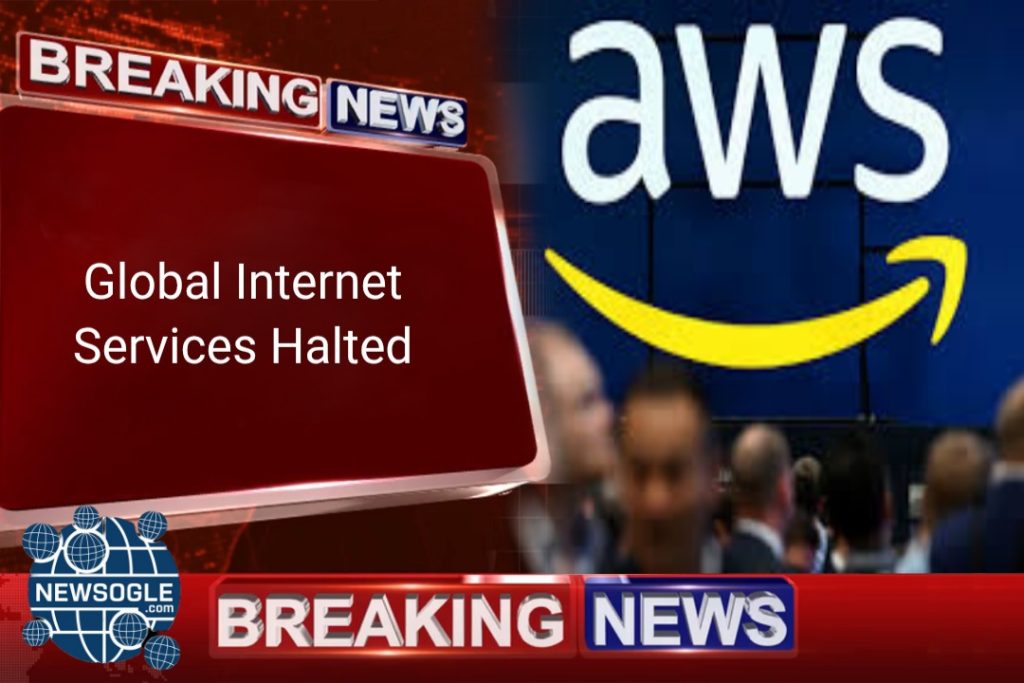
Date: October 20, 2025
A massive and prolonged technical breakdown within Amazon Web Services (AWS), the world’s largest cloud computing service, paralyzed a significant portion of the global internet on October 20, 2025. This outage was not confined merely to Amazon’s own retail website and logistics network but had a direct and severe impact on thousands of third-party companies worldwide that rely on the foundational AWS infrastructure.
This Amazon outage has once again highlighted the risks of over-reliance on a single company’s infrastructure in the world’s digital economies. Initial estimates place the resulting financial losses in the billions of dollars.
The Nature of the Outage: Where and Why Did the Failure Occur?
According to initial reports and Amazon’s own Service Health Dashboard, the failure primarily originated in a critical and heavily used AWS region, likely US-EAST-1 (Northern Virginia). This region serves as a crucial hub for technology companies globally.
Root Cause: Network Connectivity Collapse
Amazon issued a statement in the early evening confirming that the outage was rooted in internal network connectivity issues. The problem reportedly occurred during routine maintenance, triggering a cascading failure within the routing and DNS (Domain Name System) services. This failure severed communication between various AWS Availability Zones (AZs), causing data processing and load balancing to grind to a complete halt.
Given the inherently high level of redundancy designed into AWS data centers, experts are perplexed as to how such a broad and prolonged breakdown within a single region was possible.
Severe Impact on Amazon’s Own Services
Amazon’s retail arm was among the first and hardest hit by the outage. Since the Amazon.com website is largely hosted on its own AWS infrastructure, the following impacts were observed:
- Amazon.com and Applications: A significant portion of the website displayed an “Error 503 Service Unavailable” message for many hours. Customers were unable to log in, and the purchasing process was entirely suspended.
- Logistics and Supply Chain: The outage severely affected Amazon’s internal dashboards, inventory management systems, and warehouse operations. Delivery scheduling, package tracking, and the processing of new orders came to a near-total standstill.
- Consumer Devices: Services like Alexa, Kindle, and Prime Video, which depend on the AWS backend, became partially or completely inoperable. Consumers widely reported smart home devices failing to function correctly.
Devastating Consequences for Third-Party Businesses (The Domino Effect)
AWS services act as a major artery in today’s digital world. Thousands of companies rely on AWS for core operations, including web hosting, databases, and computation. This outage created a “domino effect” that affected everyone from small businesses to major technology giants:
- Streaming Services: Numerous major video streaming platforms, which host their Content Delivery Networks (CDN) on AWS, failed to deliver content to users.
- Financial Technology (FinTech): Several banking applications and payment processing platforms were temporarily disabled, halting millions of transactions worldwide.
- Social Media and Communication: Some large social media companies that utilize AWS’s compute and storage units faced significant accessibility issues.
The CEO of a small e-commerce company remarked in a statement, “When Amazon’s system went down, it felt like someone had pulled our plugs out. We were left apologizing to customers while our entire business was at their mercy.”
Amazon’s Response and System Recovery
Several hours after the outage began, Amazon publicly acknowledged the situation, describing it as a “disruption in regional network service.” The recovery process was multi-phased, with engineers struggling to isolate and reboot the affected networking hardware.
Slow Restoration: The complete restoration of the system proceeded at a slow pace, as bringing the AZs back online proved to be a complex process. Even after restoration, issues with Database Synchronization and traffic routing persisted for many hours, which continued to affect service performance.
Post-Mortem and Pledges: Amazon has promised to release a comprehensive Post-Mortem report on the incident, detailing the root cause of the failure and the steps being taken to prevent future occurrences.
Financial and Regulatory Ramifications
This major outage is expected to have immediate and long-term financial repercussions.
- Stock Market Impact: As the news spread, Amazon’s share price saw a sharp decline, signaling that investors viewed the incident as a major Operational Risk.
- Business Losses: The estimated losses for third-party companies depend on the duration of their service disruption. For e-commerce firms, a shutdown at any time, especially ahead of the holiday season, translates to millions of dollars in lost revenue. Image of a downward trend stock market graph
- Regulatory Scrutiny: Regulatory bodies in several countries that oversee data and critical foundational services have demanded transparency from Amazon. This incident is likely to result in tighter government scrutiny of AWS.
Lessons for the Future
This outage, being described as one of the largest technical breakdowns in history, offers a vital lesson for companies regarding their cloud dependency.
- Multi-Cloud Strategy: It has become clear to companies that relying solely on one cloud provider is perilous. Adopting a Multi-Cloud Strategy, where workloads are distributed among different cloud providers (such as AWS, Azure, Google Cloud), may become the preferred solution.
- Cross-Region Redundancy: It is essential that data and services be stored redundantly not just across multiple AZs within one region, but also across multiple, geographically distant AWS regions. This would ensure that service can be restored from another location in the event of a complete regional failure.
Experts suggest this incident could mark a turning point for Amazon, requiring significant investment to enhance the resilience of its core infrastructure. All eyes will remain on Amazon’s post-mortem and its proposed future actions in the coming days.

Aleda Kawis is the Professional Journalist and serving in the field since 2012. She keeps extensive experience as investigating journalist and media influencer.




